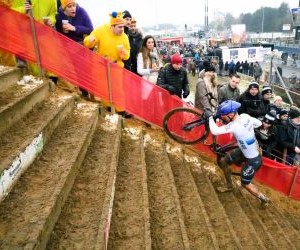Learn how to choose between clipless and flat pedals by comparing efficiency, control, comfort, and riding style to find the right setup for your needs.
HOW DO I BET THE TOUR OF FLANDERS GIVEN REPEATED BERG CLIMBS AND POSITIONING?
The Tour of Flanders, or Ronde van Vlaanderen, is one of cycling’s most prestigious one-day races, marked by relentless short climbs known as bergs and narrow roads that make positioning critical. Unlike flat sprints or mountain stages, this Classic rewards riders with tactical awareness, explosive power, and resilience over 260 kilometers of brutal terrain. For bettors, understanding how bergs and positioning shape outcomes is essential. This article explores the race’s dynamics, the rider profiles most likely to succeed, and strategic insights to guide informed betting decisions.

Race dynamics explained
The Tour of Flanders features over a dozen cobbled climbs, combined with sharp turns, wind exposure, and constant changes in pace. The combination makes it one of the hardest races to predict yet also one of the most thrilling for betting. Understanding the flow of the race is key to identifying potential winners.
Key features shaping the race
Berg climbs: Short but steep cobbled climbs like the Oude Kwaremont and Paterberg are where decisive attacks happen.
Positioning: Narrow approaches make it essential to stay near the front before each climb, as poor placement often eliminates contenders.
Endurance: Riders face over six hours of racing, demanding both stamina and smart energy management.
Team tactics: Strong support squads protect leaders and control breakaways, shaping betting odds.
These elements combine to create a race where only the strongest and most tactically aware can win. Bettors who account for both rider ability and positioning dynamics gain a sharper edge in predicting outcomes.
Rider models that succeed
Historically, specific rider archetypes excel at the Tour of Flanders. Recognizing these models helps bettors evaluate which cyclists are most likely to thrive under the unique demands of the race.
Cobbled classics specialists
These riders combine raw power with skill on cobbled climbs and descents. Their ability to attack on bergs and handle rough terrain makes them perennial favorites. Bettors should monitor their form in preceding races like E3 Saxo Classic and Gent–Wevelgem.
Explosive puncheurs
Riders with short-burst acceleration thrive on the steep gradients of climbs like the Paterberg. They may not always have the longest endurance but can decide the race with perfectly timed attacks.
All-rounders with positioning strength
Some cyclists succeed through versatility—balancing endurance, cobble-handling, and racecraft. Their strength lies in always being in the right place at the right time. Bettors should look for riders with consistent top finishes in Classics, as they demonstrate both skill and positional awareness.
Classics specialists dominate rough berg climbs.
Puncheurs win with explosive late efforts.
All-rounders leverage positioning and tactical awareness.
These models often overlap, but their shared qualities—power, resilience, and positioning—are consistent predictors of success at Flanders.
Betting strategies and insights
Smart betting on the Tour of Flanders requires analyzing rider form, tactical context, and race conditions. Unlike stage races with multiple days of data, this one-day Classic demands precise timing in evaluating odds and opportunities.
Factors to evaluate
Recent form: Strong results in early spring races often translate to Flanders readiness.
Team depth: Leaders with strong teammates have an advantage in controlling race dynamics.
Weather: Wind, rain, or cold can favor tougher riders and disrupt sprint finishes.
Positioning history: Riders consistently near the front on climbs are less likely to miss decisive moves.
Betting approaches
Favorites betting: Backing proven cobbled specialists is low-risk but lower-reward.
Dark horse picks: Look for riders with strong positioning but less media attention—odds may undervalue them.
Live betting: Monitoring the race live offers chances to capitalize on shifting dynamics after key bergs.
Long-term perspective
Bettors should also analyze historical data. Patterns often repeat: strong teams protect their leaders into the final climbs, while solo riders rarely win without perfect timing. Understanding these rhythms creates a more disciplined betting strategy and reduces reliance on guesswork.
Ultimately, betting the Tour of Flanders successfully is about blending respect for tradition with sharp analysis of current form. The repeated berg climbs and ruthless positioning make it one of cycling’s most unpredictable yet rewarding races to study—and for those betting, preparation is everything.
YOU MAY ALSO BE INTERESTED






